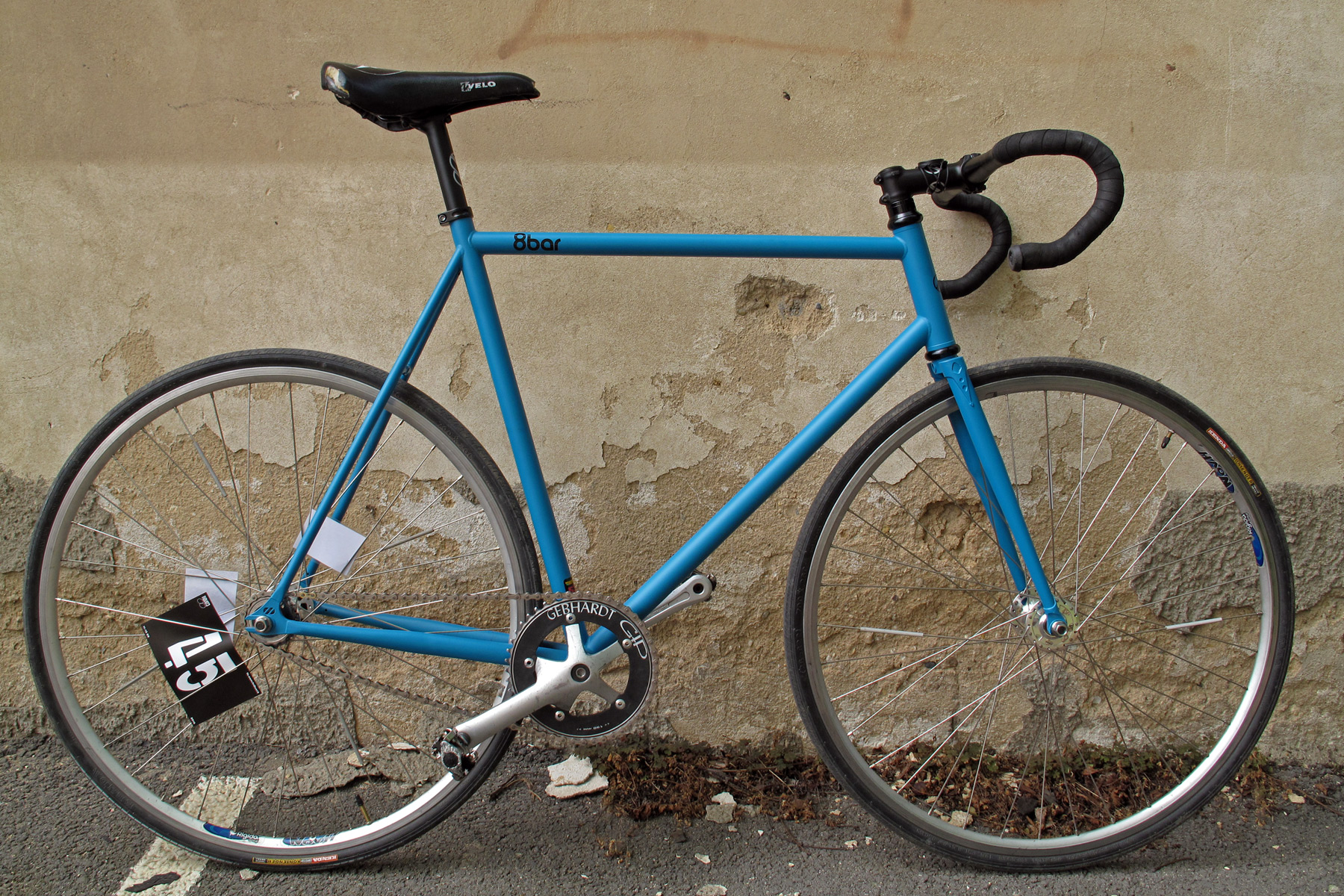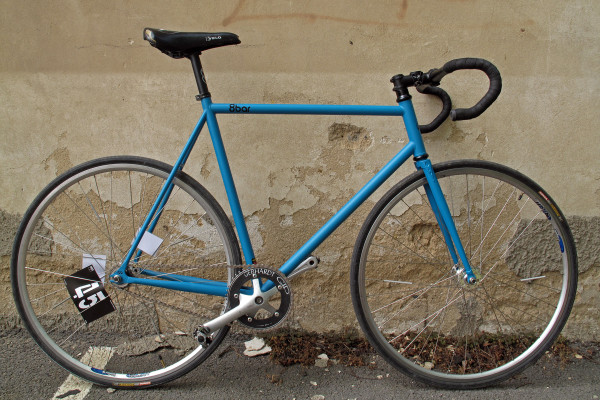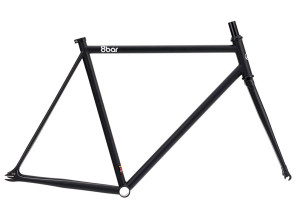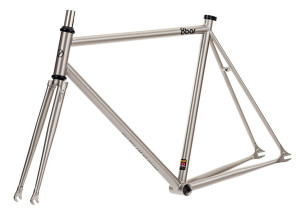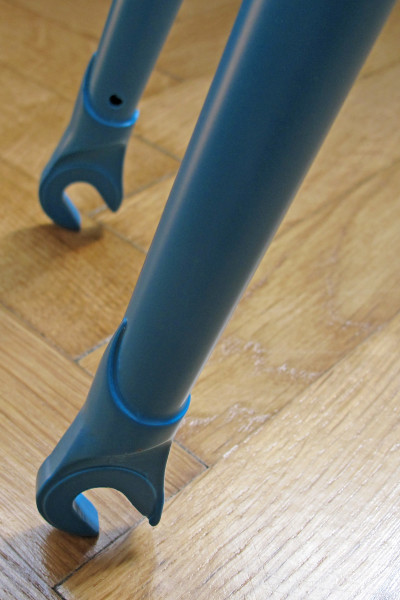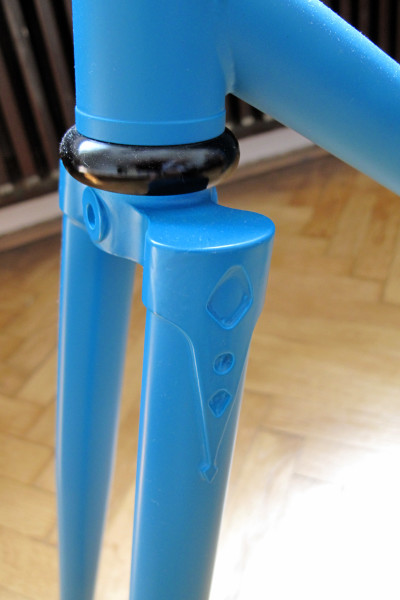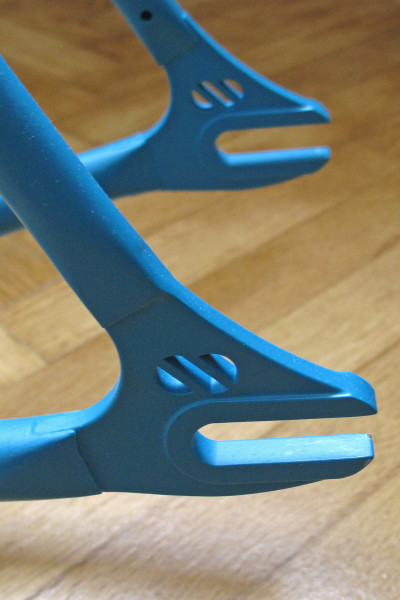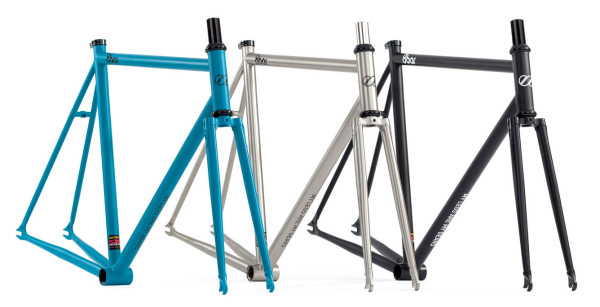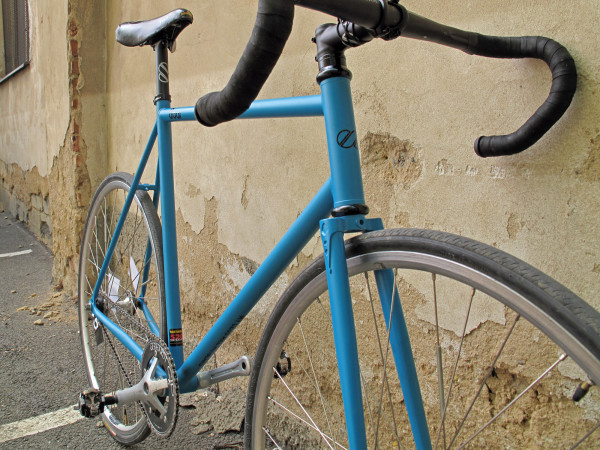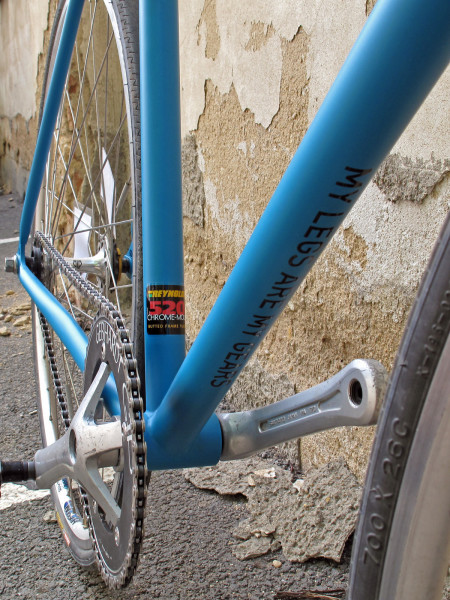Up until this past year all of the bikes out of 8bar were aluminum as they sought to deliver a balance of high performance and high value. Most companies that make value-oriented track bikes started out with the low-cost of steel, but for 8bar it was more of an evolution back to introducing a steel bike. But just like we’ve seen with their newest carbon road model that moves a little more towards the light performance side, 8bar have been working on a steel fixie for a while now that gets costs even lower down and can deliver an almost indestructible ride for cruising the city streets, or the odd trip to the track.
The NEUKLN is that new bike. We picked up a frameset in Berlin a few weeks back and have built it up with the kind of parts you find lying around or scavenged from old townies. While we’ve spent some time riding a proper carbon race machine around the indoor velodrome from our Prague HQ, spring has sprung now, and it is time to hit the rougher outdoor track here with something that can tame the cobbled streets of Prague as well. Hop past the break with us to take a closer look at the frameset, get the relevant details, and check out our first thoughts on the ride…
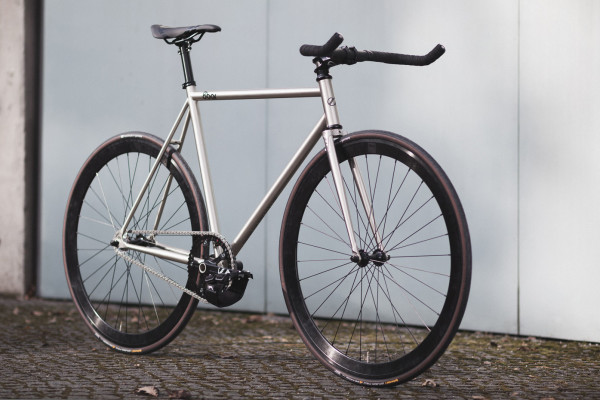
The Neukln is the newest bike from 8bar and the first steel frameset they have produced. It is welded up from double butted Reynolds 520 tubing for a more forgiving ride than their alloy bikes. The frameset is available with either a steel fork with a nicely detailed lugged crown and fork tips (like our tester) or the same aero carbon fork on their other city fixies. Each one also comes with the necessary seat collar and a basic threadless headset.
In addition to custom dropouts with a little 8bar window, the traditional looking bike sticks with a classic 27.2mm seatpost, 68mm BSA bottom bracket, and a 1.125″ steerer. It does get drilled for front and rear brakes, but no cable stops keeps a clean look. The 1900g frame and 900g steel fork are no featherweights, but are designed to stand up to the abuse of the city streets. The classic geometry keeps a level toptube and the bike comes in 4 sizes. We are riding a large which equates to a 59cm seattube (center to top of the seat collar, as per the 8bar geo chart), 56.5cm toptube, a 74° seat angle, and a 73.5° head angle.
It comes in two standard finishes: matte polished raw steel (clear-coated) or matte black. Then there is the limited edition of Petrol Blue that we have on test, which was only was made for 100 framesets. The black frame is the cheapest option at 390€, the blue steps up to 430€, and polished climbs to 470€ due to the extra work. Each of those includes the color-matched steel fork, with the carbon one adding on and extra 40€. Complete bikes are available from 950€ and up on 8bar’s online bike builder.
In addition to the steel Neukln frameset we’re testing, 8bar threw in their aluminum stem and seatpost to connect up our contact points. Our goal with the bike was to build up a low-budget urban fixed gear commuter, as this seemed like an appropriate life for the frame. While the blue is a really nice color, we kind of have the goal of making the bike look old and nasty to keep potential bike thieves away from the locked bike, so have kept with a rough build out of parts bin components. The build was quick and easy with the headset already pressed in, and the short list of parts on a brakeless fixed gear. We’ll actually put a front brake on soon, but didn’t have an extra lever lying around for the 31.8mm bar. The only issue we actually ran into was maybe the matte finish. Without a shiny clear coat, you touch it with greasy hands during the build and it was a bit of a pain to clean up. I have a feeling it won’t take long to get that lived-in look.
The first few rides through the city went well. The run of the mill geometry meant there was really no time needed to get used to its handling. So far it has dodged cars, trams, tram tracks, and pot holes well enough. It does feel a bit sluggish accelerating from a stop, no doubt due to its overall weight. But at the same time, for the money invested in frame and parts, it still is hard to beat, and if it holds up to abuse, it will be well worth a little heft. We’ll take the bike on all type of adventures in and around our urban environment for the next several months: daily commuting (cobblestones, rails, climbs, downhills, traffic), short 20km to mid-distance 60km group road rides, velodrome training and amateur racing, and probably the occasional weekend trips. Beside looking at the geometry and ride feel, we’ll take our time to see how the finish and frame build stand up to the test of time living the hard life in the city.
